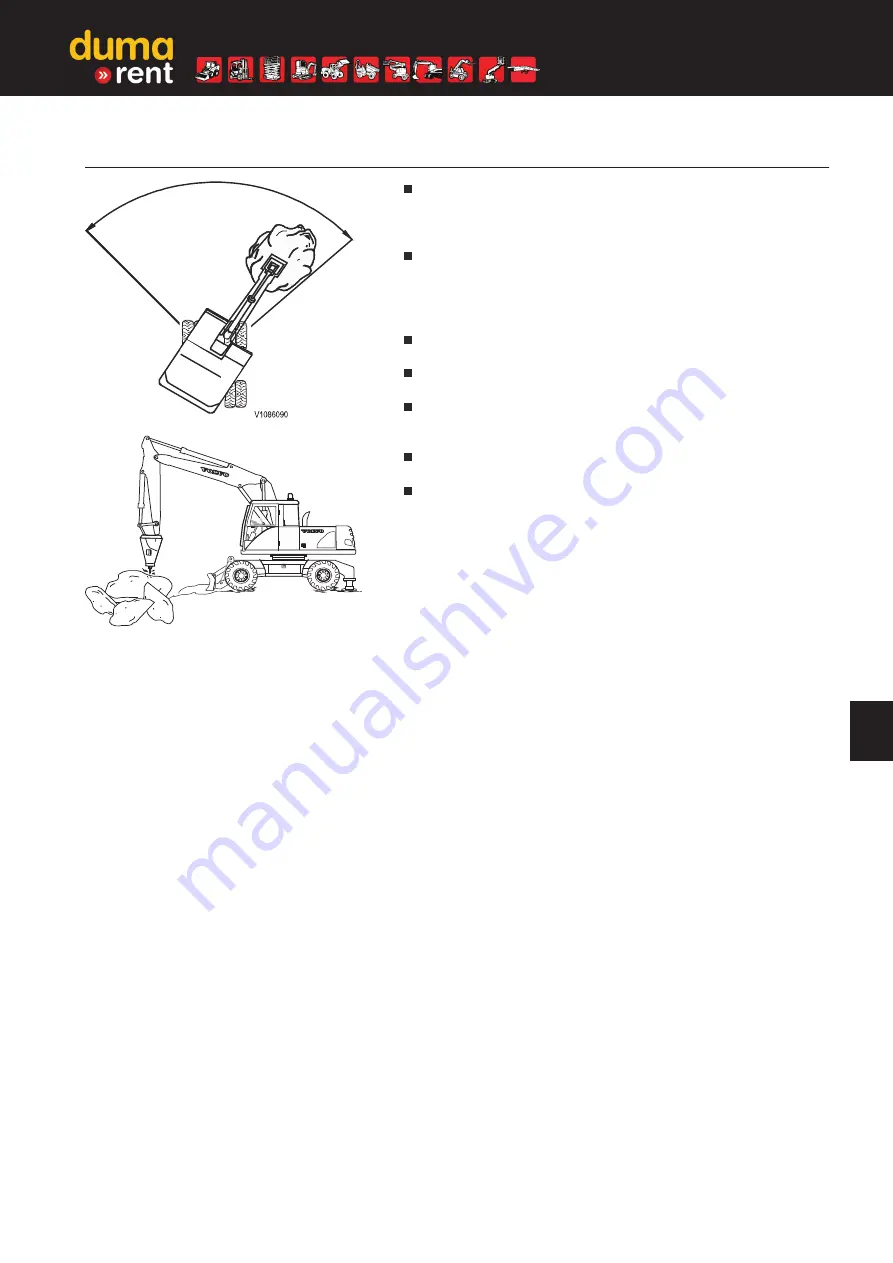
If there is no special automation for making an initial mark, this
can be facilitated like this: Make a short series of strokes with
a light feeding force, so that a chipped-out indentation like a
punch mark is made.
Adapt the load on the hammer during the stroke sequence in
order to keep the vibrations in the machine to a minimum while
at the same time the hammer is working most efficiently. On
larger machines, the float position, may, however, provide a
suitable load on the hammer.
Do not transfer so much load onto the hammer that the front
end of the machine begins to be raised off the ground.
If the block has not cracked after a series of approx. ten strokes,
change the point of attack.
It is easier to load the hammer correctly, when the arm is held
close to the vertical line. The arm and bucket cylinders are then
also far from their end positions, which is preferable.
Avoid working with the hammer horizontally as this will cause
great wear.
When the material breaks, ”catch hold of” the hammer, before
the block breaks up completely. Switch off the hammer
immediately to avoid idle strokes, otherwise the locking of the
hammer bar may be damaged, at the same time as the strain
on the excavator equipment increases.
If the hammer does not work, check the following:
1 Are the hydraulic oil hoses, supplying the hammer with oil,
blocked? Check that any quick-action couplings are properly
pressed in and that shut-off valves are fully open.
2 Do the hoses vibrate strongly? Check that the pressure in the
pressure accumulator is correct.
If the hammer still does not function correctly in spite of the above
mentioned measures, get in touch with the supplier of the
hammer.
V1108117
Operating techniques
Hammer
221
www.
duma
-rent.com


































